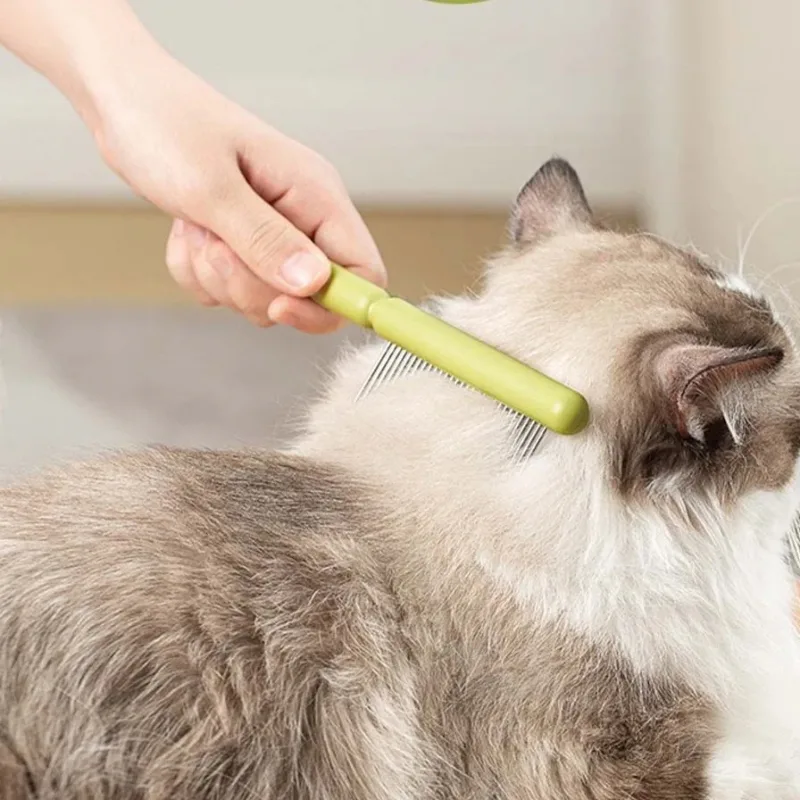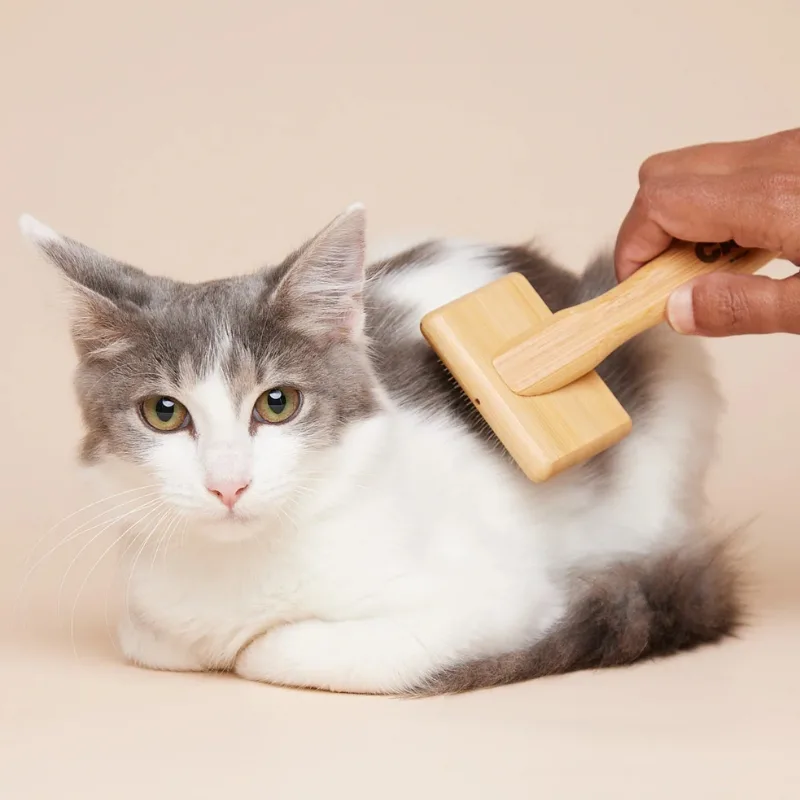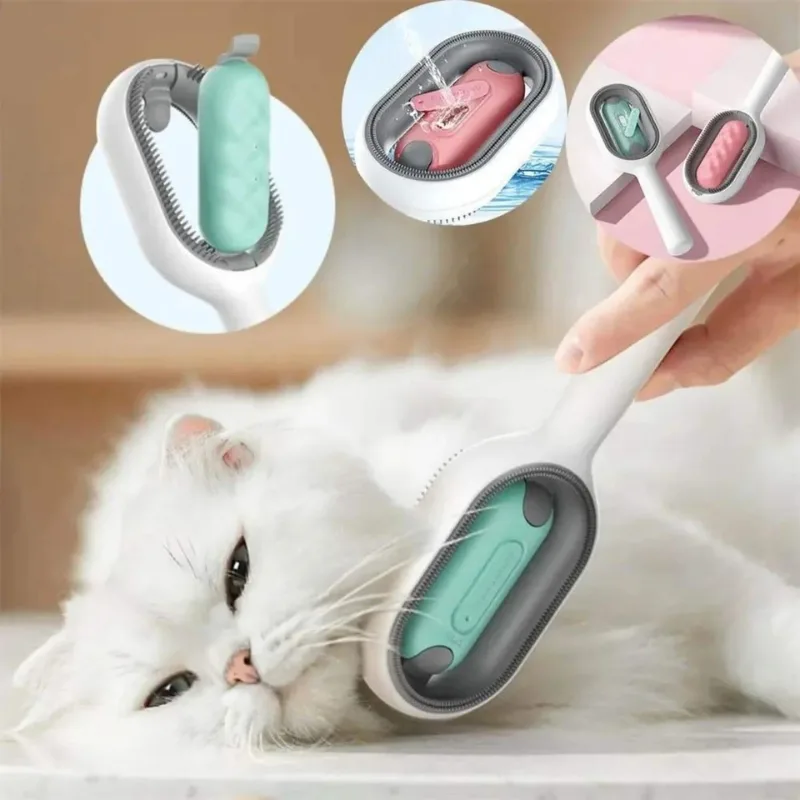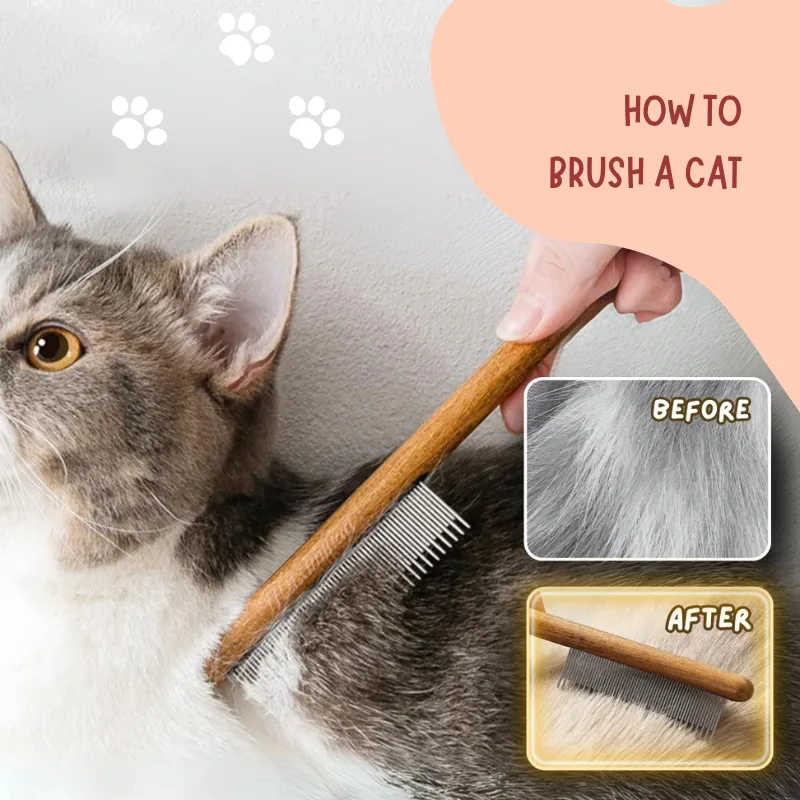Brushing your cat might seem like a straightforward task, but it’s an essential part of pet care that many cat owners struggle with. Regular grooming not only helps keep your feline friend’s coat smooth and shiny, but it also minimizes shedding, reduces the risk of hairballs, and provides an opportunity to check for fleas and skin issues. This guide will walk you through the steps of how to brush a cat effectively, ensuring a pleasant experience for both you and your furry companion.
Understanding the Importance of Brushing
One of the first steps in understanding how to brush a cat is recognizing the myriad benefits it brings. Brushing removes dirt, dander, and loose hairs from your cat’s coat. This is particularly important for cats with longer fur, as they are more prone to matting and tangling.
Regular grooming can also distribute natural oils across your cat’s skin and fur, promoting a healthy and glossy coat. Finally, brushing can be a bonding experience that enhances the trust and affection between you and your pet.

Choosing the Right Cat Brush
When learning how to brush a cat, the type of brush you use is paramount. Different brushes are suitable for different types of fur:
- Bristle Brush: Ideal for short-haired cats as it helps remove loose hairs and dirt.
- Slicker Brush: Perfect for long-haired cats, slicker brushes detangle mats and knots.
- Rubber Brush: Good for cats that shed a lot, these brushes can stimulate blood circulation.
- Deshedding Tool: Useful for removing the undercoat of heavy shedders, preventing hairballs.
Visit Pete’s Pet Supply for a wide range of cat brushes best suited for your needs.
Preparing Your Cat for Brushing
The adage “preparation is key” holds true when brushing a cat. Start by creating a calm environment. Cats are highly sensitive to their surroundings, and a quiet, relaxed setting can make a world of difference.
1. Familiarization: Before starting, let your cat sniff and inspect the brush. This helps reduce any fear or anxiety they might have about the new object.
2. Praise and Treats: Reward your cat with treats and praise to associate brushing with positive experiences.
3. Time it Right: Choose a time when your cat is relaxed. Post-meal or after a nap usually works well.

Step-by-Step Guide on How to Brush a Cat
Brushing your cat can seem daunting, but breaking it down into manageable steps can make the process smoother and more enjoyable for both you and your pet. Here’s a detailed step-by-step guide to help you master the art of brushing a cat.
Step 1: Inspect the Coat
Before you embark on the brushing process, it’s crucial to start with a thorough inspection of your cat’s coat. Gently stroke your cat to make them comfortable and take this opportunity to check for any signs of knots, tangles, or other issues such as dirt, debris, or parasites.
- Look for Knots and Tangles: Pay special attention to areas prone to matting, such as under the legs, the belly, and around the neck.
- Check for Skin Conditions: Look for any bumps, redness, or irritation which could indicate skin issues.
- Notice Any Parasites: This is a good time to check for fleas or ticks that might be hiding in your cat’s fur.
Step 2: Start Slow
When it comes to brushing, it’s important to start slow, especially if your cat is not used to being groomed. A gentle approach can help your cat relax and become familiar with the process.
- Use Gentle Strokes: Begin by using soft, gentle strokes with the brush, starting from the head and moving towards the tail. This direction mimics how cats naturally groom themselves.
- Observe Reactions: Keep an eye on your cat’s body language. If they seem anxious or uncomfortable, pause and give them a few moments to calm down.
Step 3: Be Gentle on Tangles
Encountering tangles and mats is common, especially in long-haired cats. It’s essential to address these without causing your cat any pain or discomfort.
- Use a Detangling Spray: If you find a particularly stubborn tangle, apply a detangling spray to make it easier to work through.
- Avoid Pulling: Never pull on the matted area as this can hurt your cat. Instead, gently tease out the tangle with a slicker brush or a comb. Take small sections and work patiently.

Step 4: Regular Areas First
To make the process comfortable for your cat, start brushing in areas that they naturally find comforting. This will help ease them into the grooming routine.
- Begin with the Back and Sides: Most cats enjoy being petted on their back and sides. Start brushing these areas first.
- Move to Sensitive Areas Slowly: Once your cat seems comfortable, you can gradually move onto more sensitive zones like the belly, legs, and the chest. Be extra gentle and patient with these areas to avoid causing any distress.
Step 5: Check for Fleas and Skin Issues
As you brush, you’re in an optimal position to inspect your cat for any signs of fleas, ticks, or skin issues. Regular checks can lead to early detection and treatment, ensuring your cat stays healthy.
- Fleas and Ticks: Look for small dark spots or tiny insects moving through the fur, especially around the ears, neck, and base of the tail.
- Skin Problems: Notice any unusual bumps, redness, or bald patches. These could be signs of allergies, infections, or other skin conditions that may require veterinary attention.
Step 6: Short Frequent Sessions
Cats have relatively short attention spans, and grooming can sometimes be overwhelming for them. Keeping sessions brief but frequent can help your cat acclimate to the routine without getting too stressed.
- Keep It Short: Initially, aim for grooming sessions of about 5-10 minutes. This is usually enough time to make progress without overwhelming your cat.
- Gradual Increase: As your cat becomes more comfortable, you can gradually increase the duration of each session.
- Frequent Brushing: Regular brushing is key to maintaining a healthy coat, so try to make it a part of your daily or every-other-day routine depending on your cat’s needs and fur type.
Post-Brushing Care
- Clean the Brush: After each grooming session, make sure to clean the brush thoroughly to keep it effective and hygienic for future use.
- Reward Your Cat: End each session with a reward, reinforcing a positive experience. Over time, your cat will begin to associate grooming with treats and affection.
Troubleshooting Common Problems
1. Restless Cat:
If your cat is restless or uncooperative, try breaking up the session into smaller segments, or consider brushing them when they’re more relaxed or tired.
2. Aggressive Behavior:
Some cats may hiss, scratch, or bite. In such cases, consult with your vet to rule out any underlying health issues. They might be experiencing pain or discomfort.
3. Over-Grooming:
Cats can become overly enthusiastic about grooming, leading to bald patches. If this occurs, reduce brushing frequency and consult a vet if the problem persists.

Tips for Long-Haired Cats
Brushing long-haired cats can be particularly challenging. Here are some additional tips to help:
- Daily Brushing: Long-haired cats often require daily brushing to prevent matting.
- Specialized Tools: Use tools like dematting combs and detangling sprays specifically designed for long-haired cats.
- Professional Help: For severely matted fur, it might be necessary to seek professional help. Groomers have the expertise and tools needed to handle tough mats without injuring your cat.
Knowing how to brush your cat effectively can make a significant difference in their overall health and wellbeing. Not only does it keep their coat looking and feeling great, but it also provides a wonderful bonding opportunity for both of you. Remember to be patient, gentle, and consistent with your brushing routine. With time, your cat will likely come to enjoy and even look forward to grooming sessions. For the best cat brushes and grooming supplies, visit here.
Javier Cortes – Founder of Pete’s Pet Supply store since 1993. Has a lot of experience in the animal and pet industry. From professional knowledge of the industry and experience in caring for, buying and selling food, toys and equipment for pets. Javier Cortes often shares this knowledge on forums and the store’s website.

Leave a Reply